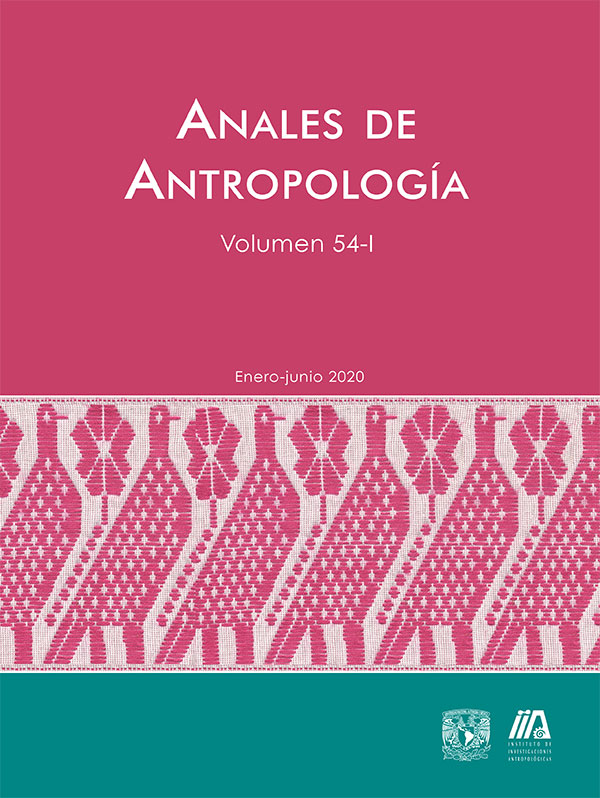Aspects of population genetics in Mesoamerica
Main Article Content
Abstract
It is not known if the variability of a population in pre-Hispanic times formed a joint population of different origins, or if it coexisted as a cultural group but separated into strata (of different origins), or if its diversity was similar to other regions, sites or populations. As long as there are no extensive genetic samples of archaeological remains from different periods, is it impossible to define a Mesoamerica in terms of biological inheritance. However, it could be assumed that before post-Hispanic events the flow of genes was conditioned, in principle, by distances and geographical difficulties with respect to both trade and social relations. Thus, in order to analyze how much of the genetic distribution corresponds to the Mesoamerican area -and taking into account that the concept itself has been under debate-, based on foundational mitochondrial dna markers, data are analyzed from both urban and indigenous populations of 16 states of Mexico. Haplotypes obtained with the pcr and rflp technique were analyzed; Phist distances were estimated with the arlequin 3.0 program. The results showed that the different populations are presented in a continuum of genetic flow throughout the country, greater among urban populations, but with differences between large regions and within them. The division into two large branches occurs in a range between 0 and 0.19. The Southeast (Yucatan, Campeche and Maya in general) and the Zapotec are separated from the rest of the groups, and these, in turn, are subdivided coinciding with Mesoamerica sometimes and sometimes not.
Downloads
Article Details
Citas en Dimensions Service
Esta revista usa una licencia CC del tipo CC BY-NC-ND 3.0. Se maneja bajo el esquema de acceso abierto, con una licencia Creative Commons Attribution-NonCommercial-NoDerivs 3.0 Unported.
